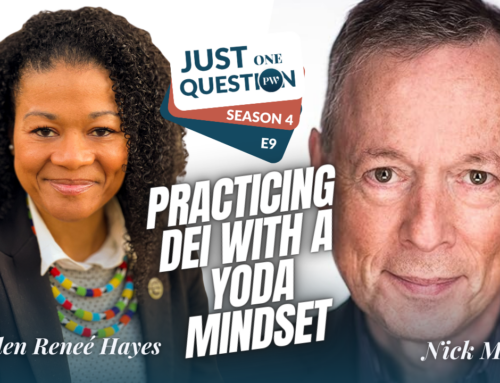Imagine you’re settling into your seat in the movie theatre, popcorn and soda at the ready, waiting happily for the latest James Bond movie to start. You can’t wait to see what the proverbial high stakes opening chase before the credits will be – how many explosions, how fast, how many bodies littering the ground.
Instead, as the lights dim, an image of Daniel Craig, wearing a business suit and tie, appears in front of you on the big screen. He’s standing in front of a Power Point set up, and he proceeds to put up an agenda slide for the upcoming movie. He then reads the half-dozen or so lines off the screen, telloing you in some detail about what's going to happen, saying between each one, “And then, and then, and then.” And at some point, he says, “Oh, and the item you’ve all been waiting for, the coffee break. We’ve got donuts and muffins.”
How’s your experience of the movie so far? And yet, this is precisely what way too many speakers do in meeting after meeting, presentation after presentation, telling people what they’re going to say before they say it.
How much of a Bond movie is the surprise and the suspense? Why do people purposely set out to kill the surprise and suspense (what there is) in a business presentation?
Instead of an agenda slide, then, here are several ways to get your audience through the experience with a little more grace and excitement.
First, since audiences come into a presentation asking Why? – why am I here, why should I care, why is this important to me? – answer that question for them with a quick story that sets the scent. It should be one to three minutes, tops. And at the end, point the moral and set the scene by saying something like, “So it’s people like Jack that are demanding change, and that’s what I want to talk to you about today – why change is so important in this industry.”
Now the audience knows why it’s there, what the subject is, and they have some taste of the urgency of the subject because of the compelling story you’ve told them.
Second, begin with a startling statistic. “Did you know that one out of every three students at State Univ is considering dropping out because of financial difficulties?” Again, that sets the scene and tells everyone why they’re there without giving away everything in advance.
Third, begin with an audience poll. “Let me begin by finding out something about you. How many of you have done time? How many are on the lam? How many are considering returning to the state of their original arrest to clear their records?” This kind of interaction with the audience immediately involves them and begins to make the room “smaller” – and your talk more of a conversation.
Fourth, start with a contest, or a quiz. Award prizes. I’ve seen this work well many times. Ask easy questions. Or provocative ones. I once saw a speaker (back when the Internet was young) use this technique to talk about coaching businesses to use the power of the Internet to make boring products into interesting (and profitable) services. She held up a tube of toothpaste and asked the audience, “Is this toothpaste a product or a service?” After a second’s thought, some smart, awake person shouted out, “A product!” The speaker smiled, said, “Great!” and gave the toothpaste to the audience member. Again, she held up another tube of toothpaste and said, “Is this a product or a service?” Another bright spark in the audience said, “A service!” Right, said the speaker, and handed out the toothpaste. Now the audience had the idea, and soon they were shouting out answers with enthusiasm in order to pocket the (modest) gifts. It was a perfect way to energize the crowd and introduce the topic, which the speaker then went on to discuss seriously.
Finally, begin by appealing to a different on of the five senses than hearing or sight. Hold up a prop, one that is relevant to your talk, and pass it around. Let people touch it, heft it, smell it, and so on. I once saw this technique used very powerfully by a doctor who was advocating for a kind of radiation therapy in front of a Congressional committee. The topic was intensely technical and complicated. The doctor was asking for more money and insurance coverage for a treatment program that worked better than the standard one. It involved a copper tube that aimed the radiation more precisely than the standard treatment. So the doctor passed the copper tube around the congressional committee members. It made an otherwise mysterious and difficult-sounding treatment surprisingly down-to-earth and understandable.
Avoid the agenda slide. Be creative. Keep your audiences awake with these other techniques.








Excellent points, Nick. Had never really thought about how boring and unproductive the agenda slide is. Shared this and your Single Most Common Mistake Speakers Make post with my CEO, he loved them so much he’s ordering some of your books for our office! Thanks for the insights.
Thanks for the great comment, Mike. Your CEO should be warned that ‘Working the Room’ and ‘Give Your Speech, Change the World’ are the same book. The latter is the paperback reprint of the former. You could buy them both just to compare, but I think you’ll find the words identical. ‘Trust Me’ — the new book — has new breakthrough thinking in it and is substantially different from WTR/GYS,CTW. The earlier book has more about structuring a speech or a communication and the new one more on delivery.
Hi Nick,
Great advise Nick. I am just working on my presentation for our Executive Planning Committee meeting composed of people mostly higher than me in rank. I will give this a try. But do you think this will work for academicians?
Yes, it will indeed work for academics. They’ll be astonished, but it will work. Good luck!
These sound like great ideas, so thanks for sharing. My favourite’s the lady who handed out toothpaste and other prizes – very memorable!
You might also like the 3 examples in this post called “Abandon your agenda!”. Like you, I quote specific words that speakers could say to kick things off with a bang. (Considered comments are always welcome – whatever view they express.)